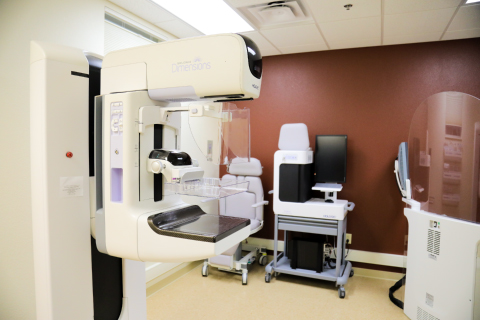
|
|
Description |
Digital Memmogram |
|
|
Machine |
- |
|
|
Preparation/ Instructions
|
A Mammography is an x-ray picture of the breasts. It is used to find tumors and to help tell the difference between noncancerous (benign) and cancerous (malignant) disease. |
|
|
Appointment |
May be |
|
|
Time taken |
20-30 minutes |
|
|
Report Given |
Same day in most of the cases, otherwise the next day |
|
|
Special Comments |
We are pioneers in the use of transrectal Memmogram in this region |
Digital Memmography
A Mammography is an x-ray picture of the breasts. It is used to find tumors and to help tell the difference between noncancerous (benign) and cancerous (malignant) disease.
How the test is performed
You will be asked to undress from the waist up and will be given a gown to wear. you will sit or stand.
One breast at a time is rested on a flat surface that contains the x-ray plate. A device called a compressor will be pressed firmly against the breast to help flatten out the breast tissue.
The x-ray pictures are taken from several angles. You may be asked to hold your breath as each picture is taken.
Sometimes you will be asked to come back at a later date for more mammogram images. This does not always mean you have breast cancer. Rather, the doctor may simply need to recheck an area that could not be clearly seen on the first test.
Digital mammography is a newer technique that allows the x-ray image of the breast to be viewed and manipulated on a computer screen. It improves accuracy, but is not yet available everywhere.
How top prepare for the test
Do not wear deodorant, perfume, powders, or ointments under your arms or on your breasts on the day of the mammogram. These substances may obscure the images. Remove all jewelry from your neck and chest area.
Tell your health care provider and the radiologist if you are pregnant or breastfeeding.
How the test will feel
The metal may feel cold. When the breast is compressed, you may have some pain. However, this is necessary in order to obtain good images.
Why the test is performed
Mammography is performed to screen healthy women for signs of breast cancer. It is also used to evaluate a woman who has symptoms of a breast disease, such as a lump, nipple discharge, breast pain, dimpling of the skin on the breast, or retraction of the nipple.
Screening mammograms are improve the detection of early breast cancer, when it is more likely to be curable.
- Most but not all organizations recommend women began breast cancer screening at age 40 and have repeat mammograms every 1 to 2 years
- All women over age 50 should have a screening mammogram every 1 to 2 years
Women who have or had mother or sister with breast cancer should begin yearly mammograms earlier than the age the family member was diagnosed.
Breast ultrasound may also be used to screen women at high risk.
In addition to mammography, clinical breast exams (the health care professional checks the breasts using the fingers) and monthly breast self-exams are often recommended.
- Women age 20 and older should have a clinical breast exam every 3 years
- Women age 40 and older should have a clinical breast exam every year
All women age 20 and older perform monthly breast self-examination.
These are general recommendations for mammography, clinical breast exams, and breast self-exam. Women should discuss with their personal health care provider how often to receive breast cancer screening, including mammography and clinical breast exam. Recommendations vary depending on personal risk factors such a strong family history of breast cancer.
Normal results
Breast tissue that shows no signs of a mass or calcification is considered normal.
What abnormal results mean
A well-outlined, regular, clear spot is more likely to be a noncancerous condition such as a cyst.
A poorly outlined, cloudy area is more likely to suggest breast cancer. However, some cancers may appear well-defined.
Sometimes, the doctor will use ultrasound to further examine your breast and determine the next best step. When findings from a mammogram or ultrasound look suspicious, a biopsy is performed to determine if it a cancerous or noncancerous condition.
Risks
The level of radiation is low and any risk from mammography is exceedingly low. If you are pregnant and need to have an abnormality checked, your belly area will be covered and protected by a lead apron.
Routine screening mammography is not done during pregnancy or lactation.
Considerations
Mammography is important because it can, in some cases, detect breast cancers before you can feel them with your fingers.
Alternative names
Mammogram

